HOW TO PLAY "BACK TO BASICS" RULE - SPLINTERLANDS [PT-BR/ENG]
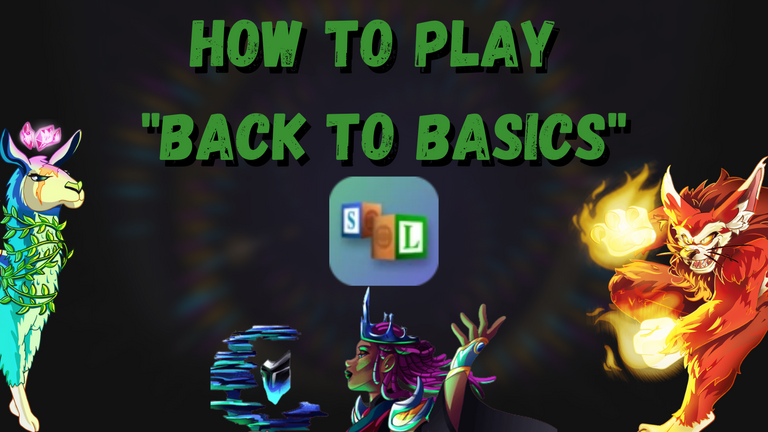


(nativo)

Este é a regra que eu considero a mais simples em Splinterlands, e ao mesmo tempo é também umas das mais difíceis de se jogar pois você pode simplesmente se perder no básico já que quando montamos nossos times, levamos em considerações inúmeras variáveis que são simplificadas quando a Back to Basics está em jogo.
Vou condensar nesse post algumas estratégias interessantes para se utilizar com essa regra, e para alguns isso pode parecer simplesmente óbvio e desnecessário, mas acredite, aprender e rever o básico é sempre importante para que possamos aumentar nosso conhecimento sobre o macro do jogo. Então espero que entendam e gostem deste conteúdo.

DE VOLTA AO BÁSICO 

Esta regra faz com que todas as unidades percam suas habilidades, tornando as partidas realmente básicas e diminuindo boa parte das possibilidades estratégicas dos dois jogadores, porém isso não significa que não se deve pensar muito ao montar o seu time, pois existem sim muitas maneiras interessantes de obter vantagem sobre essa regra, e irei ensinar alguns desses metodos para quem ainda não sabe.
1- INVOCADORES QUE DÃO HABILIDADES
Apesar dos seus monstros perderem suas habilidades, isso não significa que os invocadores não poderão lhes dar algumas habilidades novas. Essa é uma das maneiras mais fáceis de sair do básico e sobrepujar o oponente com uma boa escolha de invocador.
Vou organizar uma pequena tabela para exemplificar em quais situações cada um desses invocadores pode se sair melhor em casos onde há outra regra em conjunto com a Back to Basics.
 |  |  |  |  |
|---|---|---|---|---|
  |     |   |  |    |
A ideia é simples: utilize o elemento disponível que possua o invocador que lhe dê mais benefícios em determinadas regras.
O Yodin é a opção ofensiva mais poderosa dentre todos, mas você preferirá utilizá-lo em partidas de alta mana para escolher unidades fortes e resistentes para durarem em sua linha de frente enquanto as outras causam seu dano explosivo. Já o Lir garantirá que as unidades de longa distância do oponente se auto destruam enquanto atacam.
Em combates de unidades corpo a corpo as lutas são 1vs1, ou seja, escolher um invocador que dê um dano extra como o Thorns  do Mylor ou garanta uma sobrevida absurda com regeneração de vida ou armadura (com o Chanseus ou a Kitty) darão uma vantagem enorme ao seu combatente, permitindo que ele possa vencer o time inteiro do inimigo sem nem tomar dano.
do Mylor ou garanta uma sobrevida absurda com regeneração de vida ou armadura (com o Chanseus ou a Kitty) darão uma vantagem enorme ao seu combatente, permitindo que ele possa vencer o time inteiro do inimigo sem nem tomar dano.

Em resumo você deve saber escolher dentre as opções de invocadores que dão habilidades o que melhor se encaixa na sua partida, considerando a mana e elementos disponíveis, além da segunda regra que definirá quais rumos você deve tomar.
2- ESCOLHA BEM SEU TIPO DE DANO
Esta é outra decisão absurdamente importante mas que muitas pessoas acabam não dando tanta prioridade. Não adianta pegar inúmeras cartas de ataque a distância se você não possuir uma linha de frente robusta que aguentará tempo suficiente para seus arqueiros causarem dano.
Pior ainda seria montar um time exclusivo de unidades físicas sem que haja alguma das regras 

 que lhes permitam atacar da Backline. Ao desconsiderarmos as outras regras da partida, nós temos a seguinte ordem de melhor para o pior tipo de dano em partidas de Back to Basics:
que lhes permitam atacar da Backline. Ao desconsiderarmos as outras regras da partida, nós temos a seguinte ordem de melhor para o pior tipo de dano em partidas de Back to Basics:
 >
>  >
> 
Sério, o dano mágico será a melhor escolha na maioria dos casos pois ele possui três características super vantajosas:
- Consegue atacar de todas as posições;
- Ignora armadura;
- Não erra seus ataques.
Com esse tipo de dano você garantirá que suas cartas sempre vão atacar, mas isso não significa que você deva escolher isso sempre, afinal, a segunda regra e a disposição de invocadores como Yodin podem mudar sua escolha.
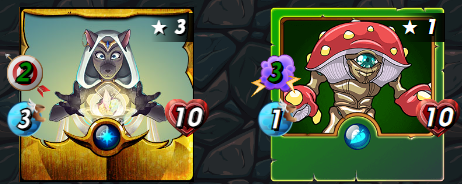
No final do post eu mostrarei uma partida onde abordarei um pouco mais sobre esse e outros dos assuntos relevantes para mostrar na prática o quão impactante essas decisões podem ser para definir o vencedor do confronto.
3- ABUSE DOS "EXPLOITS"
Ok, é exagero chamar de exploit pois não é, mas gosto de enxergar essa estratégia dessa maneira pois ela pega muitos oponentes de surpresa.
As partidas que geralmente são as mais difíceis de montar composição são aquelas em que aparecem Back to Basics  e Up Close and Personal
e Up Close and Personal  juntas, MAS NA VERDADE ELAS DEVEM SER AS MAIS FÁCEIS. E porquê? Simples, existem invocadores e unidades que são absurdamente poderosas para essas partidas.
juntas, MAS NA VERDADE ELAS DEVEM SER AS MAIS FÁCEIS. E porquê? Simples, existem invocadores e unidades que são absurdamente poderosas para essas partidas.

Assim como o Chanseus consegue fazer a unidade da linha de frente praticamente ignorar o dano que ela receberia todos os turnos (o que já te garante a vitória se o seu oponente não vier preparado), existem outras unidades que são acima da média nesse conjunto de regras.
Eu estou falando das cartas com DOIS TIPOS DE DANO. É meus amigos, mesmo que apenas unidades físicas sejam permitidas, o fato do dano principal destas cartas ser físico lhes habilita a serem escolhidas nesses confrontos, dessa forma você burla a limitação de ter apenas sua unidade da linha de frente atacando.
 | 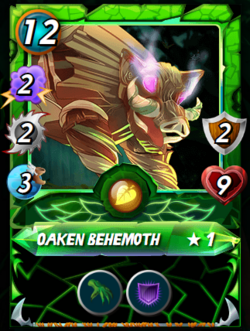 | 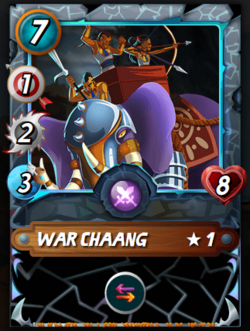 |
|---|
Esse é o "exploit" que te permite ter duas unidades atacando no mesmo turno em um conjunto de regras que geralmente lhe impediria de fazer isso.

ENTENDENDO NA PRÁTICA 

Hoje mesmo eu enfrentei uma partida que serve para exemplificar bem algumas das ideias apresentada no decorrer desse post, então irei expor ela para finalizar minha apresentação de ideias.
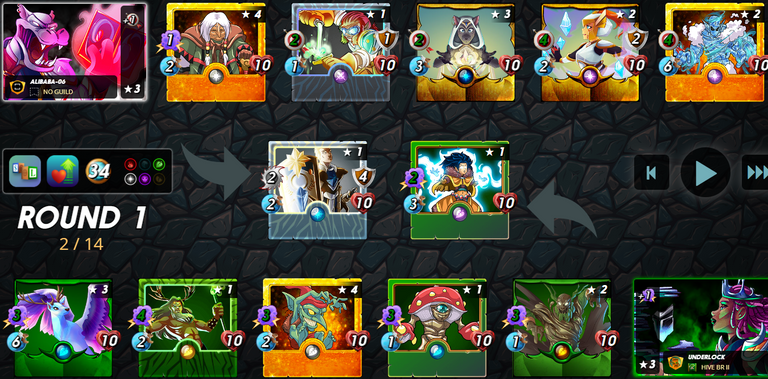
Ambos optamos por invocadores que aumentam o dano, mas eu fui para os magos enquanto o oponente optou pelos arqueiros. De cara já observamos as três desvantagens que meu oponente possui:
- Já que arqueiros não conseguem atacar da linha de frente ele utilizou uma unidade física e uma unidade mágica nas duas primeiras posições, então foram dois buffs a menos se comparado com o meu time;
- Após perder suas duas primeiras unidades, o seu dano começará a diminuir conforme um arqueiro for caindo na primeira posição, e essa diminuição exponencial de dano é incrivelmente prejudicial;
- Seus ataques podem errar.
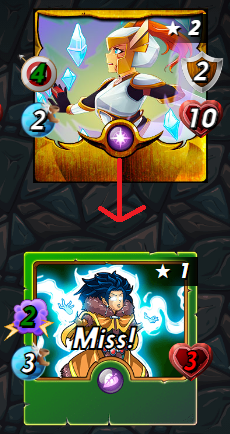
Ok, mas você pode argumentar que os arqueiros são melhores por conta do dano. Será? O oponente formou um time com 15 de dano total por turno vs 18 de dano total por turno com os meus magos. O fato de buffar todas as unidades me dá bastante vantagem no quesito dano.
Além disso o oponente não fez as melhores escolhas pois existem arqueiros com mais status bruto que seriam bem melhores nessa ocasião.
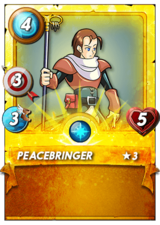 >>>
>>> 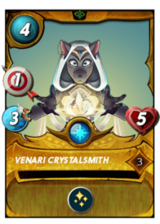
Ao considerarmos que o oponente ignorou todos os detalhes que eu mencionei neste post ao montar o seu time, fica óbvio quem saiu vitorioso nessa disputa.
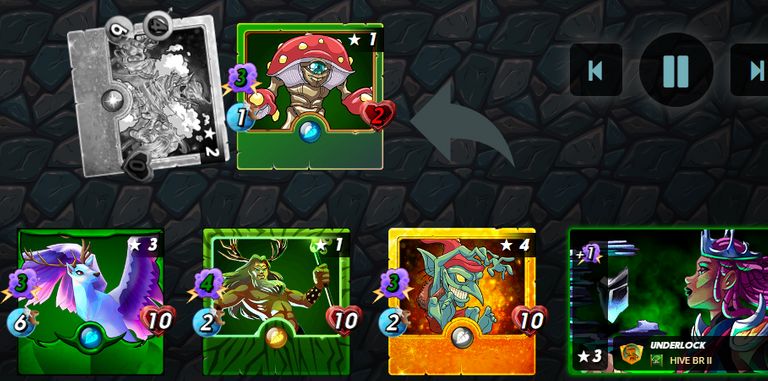
Você pode assistir a partida completa CLICANDO AQUI!

CONSIDERAÇÕES FINAIS
Dessa forma nós podemos perceber que existem sim muitas maneiras de otimizar o seu time nas partidas de Back to Basics, então lembre-se, o básico não significa montar um time ruim.
Muito obrigado a todos que leram até aqui, espero que tenham gostado. Se vocês curtirem meus conteúdos, peço que deixem o seu voto na postagem e sigam o meu perfil para poderem acompanhar as futuras postagens.



(translate google)

This is the rule that I consider the simplest in Splinterlands, and at the same time it is also one of the hardest to play because you can just lose in the basics as when we build our teams, we take into account numerous variables that are simplified when Back to Basics is in play.
I will condense in this post some interesting strategies to use with this rule, and for some this may seem simply obvious and unnecessary, but believe me, learning and reviewing the basics is always important so that we can increase our knowledge about the game's macro. So I hope you understand and enjoy this content.

BACK TO BASICS 

This rule causes all units to lose their abilities, making the matches really basic and reducing a good part of the strategic possibilities of the two players, but that doesn't mean that you shouldn't think a lot when assembling your team, because there are many interesting ways to take advantage of this rule, and I will teach some of these methods for those who don't already know.
1- SUMMONERS THAT GIVE ABILITIES
Even though your monsters lose their abilities, that doesn't mean summoners won't be able to give them some new abilities. This is one of the easiest ways to get out of the basics and overwhelm your opponent with a good summoner choice.
I will organize a small table to exemplify in which situations each of these invokers can do better in cases where there is another rule in conjunction with Back to Basics.
 |  |  |  |  |
|---|---|---|---|---|
  |     |   |  |    |
The idea is simple: use the available element that the summoner has that gives you more benefits in certain rules.
The Yodin is the most powerful offensive option out of all, but you'll prefer to use it in high mana games to choose strong and tough units to last on your front line while others deal their explosive damage. Lir will ensure that the opponent's ranged units self-destruct while attacking.
In melee unit fights the fights are 1vs1, that is, choose a summoner that does extra damage like Thorns  do Mylor or guarantee an absurd survival with health regeneration or armor (with Chanseus or Kitty) will give your combatant a huge advantage, allowing him to beat the enemy's entire team without even taking damage.
do Mylor or guarantee an absurd survival with health regeneration or armor (with Chanseus or Kitty) will give your combatant a huge advantage, allowing him to beat the enemy's entire team without even taking damage.

In summary, you should know how to choose among the options of summoners that give abilities the one that best fits your game, considering the mana and available elements, in addition to the second rule that will define which paths you should take.
2- CHOOSE GOOD YOUR TYPE OF DAMAGE
This is another incredibly important decision but one that many people end up not giving as much priority. It's no use picking up countless ranged attack cards if you don't have a strong frontline that will hold out long enough for your archers to deal damage.
Even worse would be putting together an exclusive team of physical units without any of the rules 

 that allow them to attack from the Backline. Disregarding the other game rules, we have the following order of best to worst damage type in Back to Basics games:
that allow them to attack from the Backline. Disregarding the other game rules, we have the following order of best to worst damage type in Back to Basics games:
 >
>  >
> 
Seriously, magic damage will be the best choice in most cases as it has three super advantageous features:
- Can attack from all positions;
- Ignores armor;
- Don't miss your attacks.
With this type of damage you will guarantee that your cards will always attack, but that doesn't mean you should always choose this, after all, the second rule and the disposition of summoners like Yodin can change your choice.

At the end of the post I will show a match where I will address a little more about this and other relevant subjects to show in practice how impactful these decisions can be to define the winner of the confrontation.
3- "EXPLOIT" ABUSES
Okay, it's an exaggeration to call it an exploit because it isn't, but I like to see this strategy that way because it takes many opponents by surprise.
The matches that are usually the hardest to assemble composition are the ones where Back to Basics appear  and Up Close and Personal
and Up Close and Personal  together, BUT ACTUALLY THEY MUST BE THE EASIEST. It's because? Simple, there are summoners and units that are absurdly powerful for these matches.
together, BUT ACTUALLY THEY MUST BE THE EASIEST. It's because? Simple, there are summoners and units that are absurdly powerful for these matches.

Just as Chanseus manages to make the frontline unit practically ignore the damage it would receive every turn (which already guarantees you victory if your opponent doesn't come prepared), there are other units that are above average in this set of rules.
I'm talking about the cards with TWO TYPES OF DAMAGE. It's my friends, even if only physical units are allowed, the fact that the main damage of these cards is physical enables them to be chosen in these confrontations, this way you bypass the limitation of having only your frontline unit attacking.
 |  |  |
|---|
This is the "exploit" that allows you to have two units attack on the same turn in a set of rules that would generally prevent you from doing so.

UNDERSTANDING IN PRACTICE 

Just today I faced a match that serves to exemplify some of the ideas presented throughout this post, so I will expose it to finish my presentation of ideas.

We both opted for summoners that increase damage, but I went for mages while the opponent opted for archers. Right away we can already see the three disadvantages that my opponent has:
- Since archers can't attack from the front line, he used a physical unit and a magic unit in the first two positions, so there were two less buffs compared to my team;
- After losing your first two units, your damage will start to decrease as an archer falls in the first position, and this exponential damage decrease is incredibly harmful;
- Your attacks can miss.

Okay, but you could argue that archers are better for the damage. Will it be? The opponent teamed up with 15 total damage per turn vs 18 total damage per turn with my mages. The fact that it buffs all units gives me quite an advantage in terms of damage.
In addition, the opponent didn't make the best choices because there are archers with more raw stats that would be much better on this occasion.
 >>>
>>> 
When considering that the opponent ignored all the details I mentioned in this post when building his team, it is obvious who came out victorious in this dispute.

You can watch the full match BY CLICKING HERE!

FINAL CONSIDERATIONS
That way we can see that there are many ways to optimize your team in Back to Basics matches, so remember, basics don't mean building a bad team.
Thank you so much to everyone who read this far, I hope you enjoyed it. If you like my content, I ask you to send your vote on the post and follow my profile so you can read future posts.

Dica excelente, escolher bem o summoner de acordo com o ruleset é imprescindível.

Seus posts a cada dia estão melhores e suas estratégias tb!
Obrigado por compartilhar.
!1UP
You have received a 1UP from @lipe100dedos!
@monster-curator, @oneup-curator, @leo-curator, @ctp-curator, @bee-curator, @pimp-curator, @thg-curator, @vyb-curator, @pob-curator, @neoxag-curatorAnd they will bring !PIZZA 🍕
Learn more about our delegation service to earn daily rewards. Join the family on Discord.
Yay! 🤗
Your content has been boosted with Ecency Points, by @underlock.
Use Ecency daily to boost your growth on platform!
Support Ecency
Vote for new Proposal
Delegate HP and earn more
Shared on Facebook.
Post insano ma friend, excelentes informações! Parabéns!
Really enjoying your educational series of posts; keep it up!
!PGM
BUY AND STAKE THE PGM TO SEND A LOT OF TOKENS!
The tokens that the command sends are: 0.1 PGM-0.1 LVL-2.5 BUDS-0.01 MOTA-0.05 DEC-15 SBT-1 STARBITS-[0.00000001 BTC (SWAP.BTC) only if you have 2500 PGM in stake or more ]
5000 PGM IN STAKE = 2x rewards!
Discord
Support the curation account @ pgm-curator with a delegation 10 HP - 50 HP - 100 HP - 500 HP - 1000 HP
Get potential votes from @ pgm-curator by paying in PGM, here is a guide
I'm a bot, if you want a hand ask @ zottone444